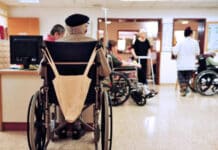Following calls from a variety of sources for greater transparency, Minnesota yesterday released a variety of information relating to the model used to support the shutdown order in the state, an order which has resulted in the loss of at least 350,000 jobs in the state and a variety of non-economic harms. The materials are available here and if you click on the links at the bottom of that page you will see a video of the briefing, the technical paper supporting the model, a powerpoint discussing the scenarios run and other information. The state has promised to release the actual code underlying the model but not for a couple of weeks, which is strange, because a common statistics program was used so they should be able to release it now.
The model itself appears to be thoughtfully constructed and the Minnesota modelers took a much better approach than that used by the widely-cited IMHE group. But like all models it is only as good as the accuracy and completeness of the information available to support assumptions. So a number of the assumptions they have made continue to look very flawed. For example, they completely ignore the ability to create additional ICU beds quite easily, as has happened in NYC. People who haven’t worked in a hospital probably don’t understand that an ICU isn’t some mysteriously high-tech medical space, it really is just taking a typical ward and adding some additional monitoring equipment and increasing staff levels. It is fairly simple to convert existing wards in a hospital to additional “ICU” beds. Adding contagion control features is also done quite readily. If access to a ventilator is the issue, you don’t need to be in an ICU to be on a ventilator. Almost all the deaths in the scenarios the Minnesota modelers run result from supposed excess ICU need over capacity, which simply isn’t the case. Minnesota will have ample capacity to deal with any cases that need to be dealt with in a ICU-like manner.
There appear to be other serious flaws, again largely resulting from assumptions dealing with unknown data, such as how much of an exposed population actually gets infected and rates of serious illness leading to deaths. But the biggest issues are how the model and the use of the model results has been communicated. The estimates of deaths have wide uncertainty ranges and the modelers know that even those can be inadequate. What should be communicated is that the model and its results should not be used for decision-making. They simply can’t provide information that is accurate enough to be useful. The astounding change in estimates from the initial run of the model, to the current runs, reflects this.
What the modelers did do that is very useful, is to run various mitigation strategy scenarios. That is exactly the approach that should be taken. How else do you know what the relative benefits and harms will be of whatever set of mitigation of spread tactics you adopt. And please, look at the powerpoint slides and note that you get basically the exact same number of deaths regardless of the mitigation strategy. My favored approach, use basic mitigation for the bulk of the population, but isolate the at-risk groups, has the same outcome as making everyone stay at home. Adopting this strategy would allow the working age population to go back to work. The economic harms due to job loss and other non-economic harms flowing from job less would be substantially reduced.
And that is the other part of the story, that is being ignored by the Minnesota press. The Governor did no analysis of the economic, job loss or other harms that might flow from the actions he took. I am flabbergasted to say the least. I simply can’t comprehend not wanting to have information about that, for planning purposes at a minimum. I have tried to think of a good analogy, and the best I can come up with is you are the lead bull for a large herd of cattle. Your herd is spooked by some threat and you all take off running, chased by the threat. There is dropoff ahead, you don’t know how far you will fall and how many of the cattle might die or be injured in the fall, but you have pictures available that if you looked at them would tell you so you could decide whether to go over the dropoff or change direction. You just go ahead and run off the cliff. And, oh by the way, the threat is following you right off the cliff and is still present.
That is exactly what the Governor did. He gave zero consideration to the job loss that would occur. He just took the state over the cliff.
_________
https://healthy-skeptic.com/
Kevin Roche received a law degree and an MBA from the University of Minnesota. He worked as a law clerk for a federal judge, at the Minnesota Attorney General’s office and at the law firm of Lindquist & Vennum. He was assistant general counsel at Park Nicollet Medical Center and American MedCenters before becoming General Counsel of UnitedHealth Group, a position he held during the company’s rapid growth and multiple acquisitions. Mr. Roche then founded and ran the Ingenix (now Optum Insight) division of UnitedHealth. After leaving UnitedHealth, he has worked as an investor, legal and business advisor, and consultant in the health care field

















